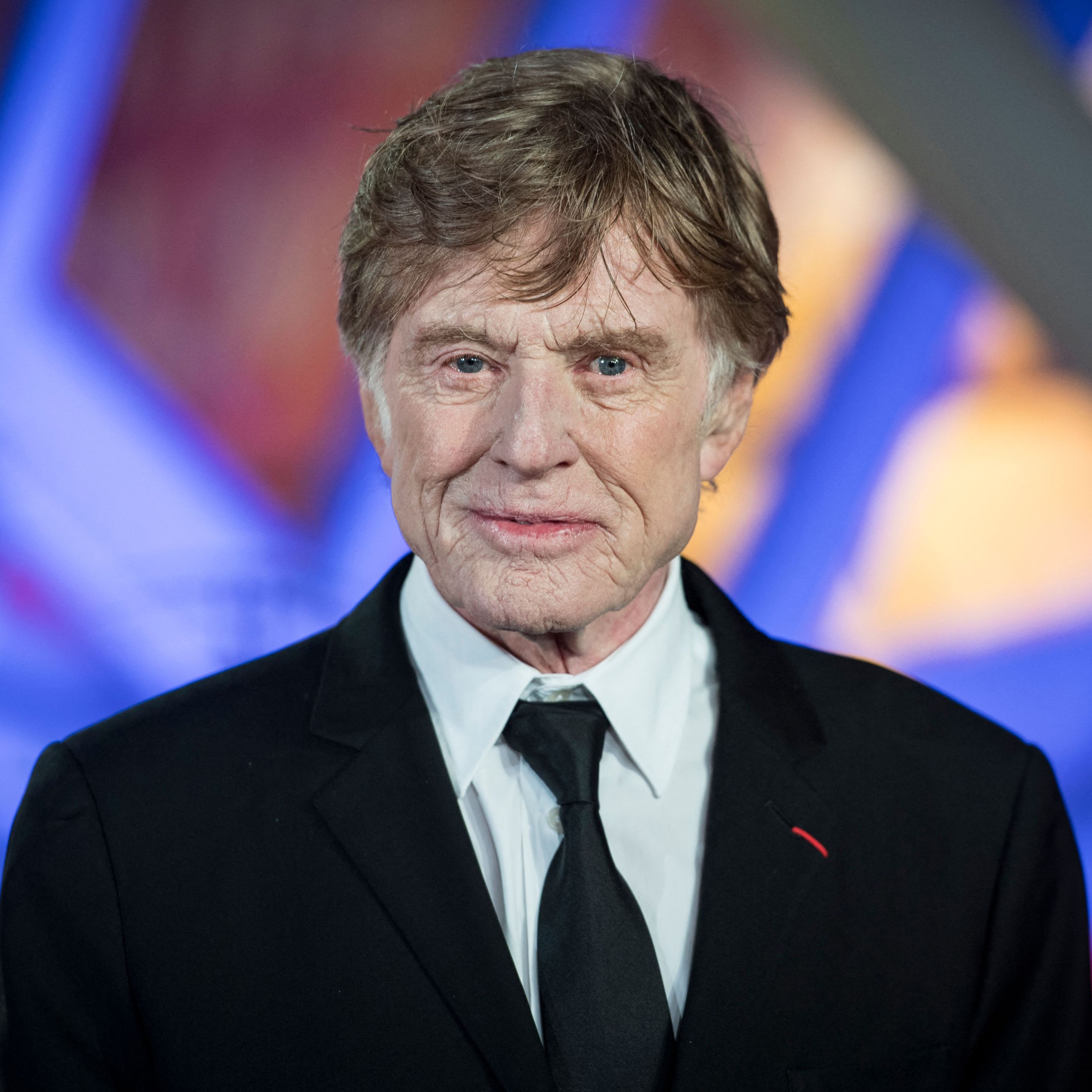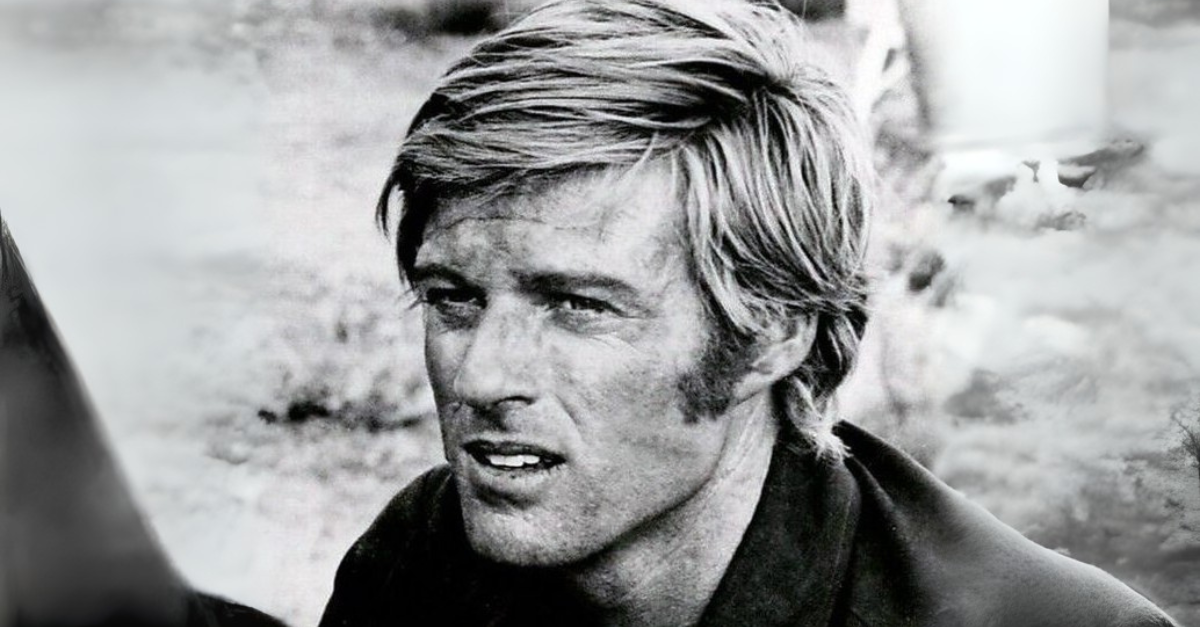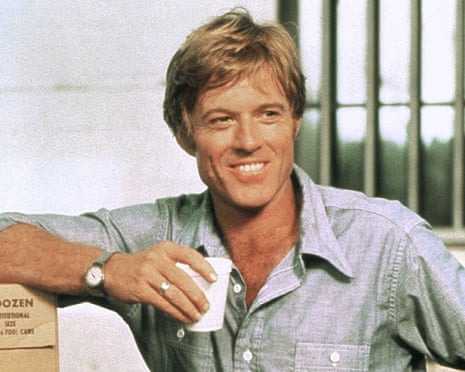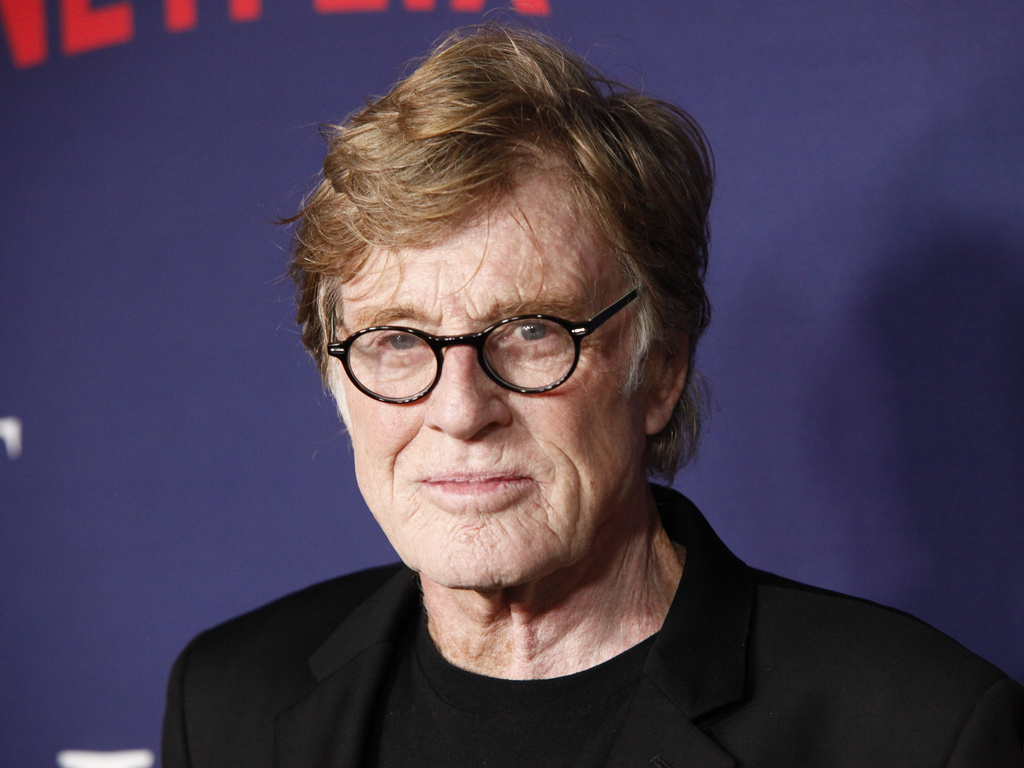
Robert Redford
Robert Redford's love life, marriage and Barbra Streisand clash as movie world mourns legend
Robert Redford, the Hollywood golden boy who became an Oscar-winning director, liberal activist and godfather for independent cinema under the name of one of his best-loved characters, died Tuesday at 89.
Redford died “at his home at Sundance in the mountains of Utah — the place he loved, surrounded by those he loved,” publicist Cindi Berger said in a statement. He died in his sleep, but no cause was provided.
After rising to stardom in the 1960s, Redford was one of the biggest stars of the ’70s with such films as “The Candidate,” “All the President’s Men” and “The Way We Were,” capping that decade with the best director Oscar for 1980’s “Ordinary People,” which also won best picture in 1980. His wavy blond hair and boyish grin made him the most desired of leading men, but he worked hard to transcend his looks — whether through his political advocacy, his willingness to take on unglamorous roles or his dedication to providing a platform for low-budget movies.
The movie world is still in shock following the death of actor and director Robert Redford. The star of "Butch Cassidy and the Sundance Kid" passed away at 89, 'surrounded by his loved ones', leaving behind an immense legacy.
New Mexico's governor Michelle Lujan Grisham said she joined New Mexicans in mourning the death of legendary actor Robert Redford.
"I join all New Mexicans in mourning the loss of Robert Redford, whose deep connection to our state left an indelible mark on its cultural and environmental landscape," Lujan Grisham wrote in a statement.
That "indelible mark"? A career that saw the actor-director and sometimes New Mexico resident star in, produce and direct films in New Mexico, while advocating for the state's growing film industry.
The governor pointed to the 1988 film "The Milagro Beanfield War," filmed in northern New Mexico and directed by Redford and more recently his role as executive producer of "Dark Winds."
"Redford was also a powerhouse advocate for New Mexico's film tax credit program, helping to spread the word across the film industry about New Mexico’s spectacular landscapes, rich culture, and committed workforce as major assets to filmmakers," the governor said in a statement.
"Robert Redford will be remembered as an artist, activist, and friend to New Mexico."
Redford, 89, died at his home in Utah. Redford owned a home in Santa Fe, as well.
USA Today reported that Redford is survived by his wife, Sibylle Szaggars, 68, whom he wed in 2009, and two daughters with ex-wife Lola Van Wagenen.
"We are saddened by the passing of Robert Redford," the New Mexico Film Office posted Sept. 16 on Facebook. "His work as an actor, director, producer, and champion of independent film had a monumental impact on the global film community and on New Mexico."

 This article originally appeared on El Paso Times: Actor, director and New Mexican Robert Redford dies at 89
This article originally appeared on El Paso Times: Actor, director and New Mexican Robert Redford dies at 89
Robert Redford shaped the way we see the American West. His films turned Montana rivers into legends, his love of Utah created Sundance, and his later years in Santa Fe anchored him in the desert light. When news broke that he had died at 88, I didn’t reach for the remote. I went for a map.
As a travel writer who once lived in Boulder, skied at Sundance, stayed at ranches in Montana, and spent long weekends in Santa Fe where my parents had a home, I’ve felt the pull of the same landscapes that defined Redford’s life. They’re stitched through his filmography too — from the trout streams of A River Runs Through It to the ranchlands of The Horse Whisperer and the rugged canyons that echo the spirit of Butch Cassidy and the Sundance Kid. These places aren’t just footnotes in his biography. They’re destinations you can still experience now.
From the Colorado town that will soon host Sundance Film Festival to California’s quietest bay escape, here’s how to step directly into Redford’s America.
When Sundance Film Festival officially relocates to Boulder in 2027, it will feel like a homecoming of sorts for me. I lived in Boulder for several years, and it has always been one of those rare towns where outdoor adventure and intellectual energy share equal footing. Redford would have appreciated that balance — a morning hike followed by an indie screening and dinner that could rival anything in L.A.
Boulder is framed by the Flatirons, sandstone slabs that rise dramatically behind town. I used to start mornings hiking the trails at Chautauqua Park, which climb steeply through pine forests before opening up to sweeping views of the city. Later in the day, I’d wander the Pearl Street Mall, a pedestrian stretch filled with street performers, bookstores, and some of the best people-watching in Colorado. The Dairy Arts Center and the Boulder Theater are both natural fits for future Sundance screenings, and in summer, the city’s farmers market adds another layer of community energy.
Dining here leans sophisticated without being pretentious. Frasca Food and Wine has a Michelin star and is one of my favorite fine dining spots in town. For cocktails, Corrida’s rooftop is hard to beat, with views of the Flatirons
glowing orange at sunset.
Where to stay: The new Limelight Boulder is the kind of place I think Redford would have chosen: modern but understated, with floor-to-ceiling windows and a lobby that encourages lingering over a glass of wine. It’s walking distance from Pearl Street and the university campus — an ideal hub once Sundance arrives.

Before it was a film festival, Sundance was a place. In 1969, Redford bought land in Utah’s Provo Canyon and set out to build something different: a ski resort that respected the land instead of overwhelming it. He placed more than 1,800 acres under permanent conservation easements and opened Sundance Resort — part ski area, part artist haven, part sanctuary. It’s one of the clearest reflections of his environmental ethos, and it still feels like a retreat designed with intention.
Robert Redford left quite a legacy as an actor and activist when he passed away at the age of 89 on September 16, 2025. In addition to acting in over 70 movies and starting the world-renowned Sundance Film Festival and non-profit organization The Redford Center, he was a tireless advocate for environmental causes for decades. One of his most memorable victories as an activist was helping to save the area of Utah that’s now known as the Grand Staircase-Escalante National Monument.
he was a tireless advocate for environmental causes for decades. One of his most memorable victories as an activist was helping to save the area of Utah that’s now known as the Grand Staircase-Escalante National Monument.
His roles ranged from Washington Post journalist Bob Woodward to a mountain man in “Jeremiah Johnson” to a double agent in the Marvel Cinematic Universe, and his co-stars included Jane Fonda, Meryl Streep and Tom Cruise. But his most famous screen partner was his old friend and fellow activist and practical joker Paul Newman, their films a variation of their warm, teasing relationship off screen. Redford played the wily outlaw opposite Newman in 1969’s “Butch Cassidy and the Sundance Kid,” a box-office smash from which Redford’s Sundance Institute and festival got its name. He also teamed with Newman on 1973’s best picture Oscar winner, “The Sting,” which earned Redford a best-actor nomination as a young con artist in 1930s Chicago.
Film roles after the ’70s became more sporadic as Redford concentrated on directing and producing, and his new role as patriarch of the independent-film movement in the 1980s and ’90s through his Sundance Institute. But he starred in 1985’s best picture champion “Out of Africa” and in 2013 received some of the best reviews of his career as a shipwrecked sailor in “All is Lost,” in which he was the film’s only performer. In 2018, he was praised again in what he called his farewell movie, “The Old Man and the Gun.”
“I just figure that I’ve had a long career that I’m very pleased with. It’s been so long, ever since I was 21,” he told The Associated Press shortly before the film came out. “I figure now as I’m getting into my 80s, it’s maybe time to move toward retirement and spend more time with my wife and family.”
Sundance is born
Redford had watched Hollywood grow more cautious and controlling during the 1970s and wanted to recapture the creative spirit of the early part of the decade. Sundance was created to nurture new talent away from the pressures of Hollywood, the institute providing a training ground and the festival, based in Park City,
Utah, where Redford had purchased land with the initial hope of opening a ski resort. Instead, Park City became a place of discovery for such previously unknown filmmakers as Quentin Tarantino, Steven Soderbergh, Paul Thomas Anderson and Darren Aronofsky.
“For me, the word to be underscored is ‘independence,’” Redford told the AP in 2018. “I’ve always believed in that word. That’s what led to me eventually wanting to create a category that supported independent artists who weren’t given a chance to be heard.

“The industry was pretty well controlled by the mainstream, which I was a part of. But I saw other stories out there that weren’t having a chance to be told and I thought, ‘Well, maybe I can commit my energies to giving those people a chance.’ As I look b ack on it, I feel very good about that.”
ack on it, I feel very good about that.”
Sundance was even criticized as buyers swarmed in looking for potential hits and celebrities overran the town each winter.
“We have never, ever changed our policies for how we program our festival. It’s always been built on diversity,” Redford told the AP in 2004. “The fact is that the diversity has become commercial. Because independent films have achieved their own success, Hollywood, being just a business, is going to grab them. So when Hollywood grabs your films, they go, ‘Oh, it’s gone Hollywood.’”
By 2025, the festival had become so prominent that organizers decided they had outgrown Park City and approved relocating to Boulder, Colorado, starting in 2027. Redford, who had attended the University of Colorado Boulder, issued a statement saying that “change is inevitable, we must always evolve and grow, which has been at the core of our survival.”
Redford’s affinity for the outdoors was well captured in “A River Runs Through It” and other films and through his decades of advocacy for the environment, inspired in part by witnessing the transformation of Los Angeles into a city of smog and freeways. His activities ranged from lobbying for such legislation as the Clean Air Act and Clean Water Act to pushing for land conservation in Utah to serving on the board of the Natural Resources Defense Council.
Redford’s early life
Robert Redford was born Charles Robert Redford Jr. on Aug. 18, 1936, in Santa Monica, a California boy whose blond good looks eased his way over an apprenticeship in television and live theater that eventually led to the big screen.
Redford attended college on a baseball scholarship and would later star as a middle-aged slugger in 1984’s “The Natural,” the adaptation of Bernard Malamud’s baseball novel. He had an early interest in drawing and painting, then went on to study at the American Academy of Dramatic Arts, debuting on Broadway in the late 1950s and moving into television on such shows as “The Twilight Zone,” “Alfred Hitchcock Presents” and “The Untouchables.”
After scoring a Broadway lead in “Sunday in New York,” Redford was cast by director Mike Nichols in a production of Neil Simon’s “Barefoot in the Park,” later starring with Fonda in the film version. Redford did miss out on one of Nichols’ greatest successes, “The Graduate,” released in 1967. Nichols had considered casting Redford in the part eventually played by Dustin Hoffman, but Redford seemed unable to relate to the socially awkward young man who ends up having an affair with one of his parents’ friends.
His biggest filmmaking triumph came with his directing debut on “Ordinary People,” which beat Martin Scorsese’s classic “Raging Bull” at the Oscars. The film starred Donald Sutherland and Mary Tyler Moore as the repressed parents of a troubled young man, played by Timothy Hutton, in his big screen debut. Redford was praised for casting Moore in an unexpectedly serious role and for his even-handed treatment of the characters, a quality that Roger Ebert believed set “the film apart from the sophisticated suburban soap opera it could easily have become.”
Redford’s other directing efforts included “The Horse Whisperer,” “The Milagro Beanfield War” and 1994’s “Quiz Show,” the last of which also earned best picture and director Oscar nominations. In 2002, Redford received an honorary Oscar, with academy organizers citing him as “actor, director, producer, creator of Sundance, inspiration to independent and innovative filmmakers everywhere.”
“The idea of the outlaw has always been very appealing to me. If you look at some of the films, it’s usually having to do with the outlaw sensibility, which I think has probably been my sensibility. I think I was just born with it,” Redford said in 2018. “From the time I was just a kid, I was always trying to break free of the bounds that I was stuck with, and always wanted to go outside.”
This story has been corrected to update Redford’s birth year to 1936, not 1937.
Associated Press journalists Hillel Italie, Jake Coyle and Mallika Sen contributed to this report. Bob Thomas, a longtime Associated Press journalist who died in 2014, was the principal writer of this obituary.
Posted on 2025/09/19 05:15 PM

